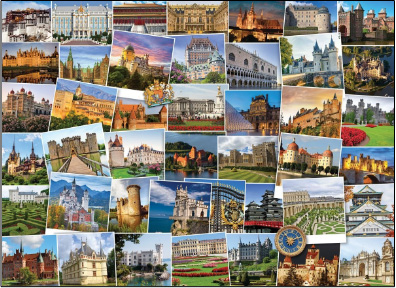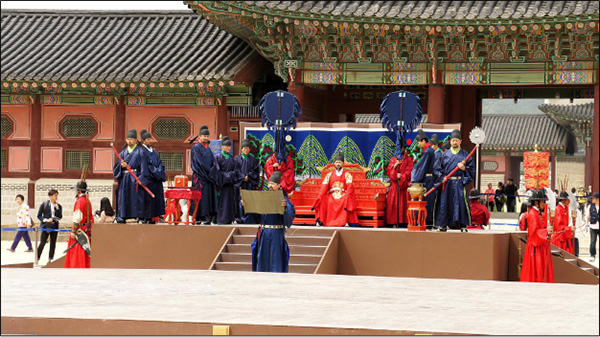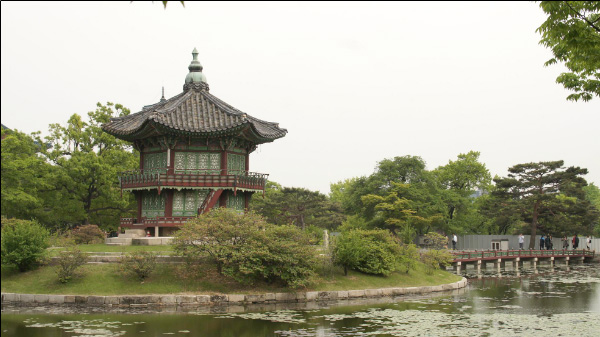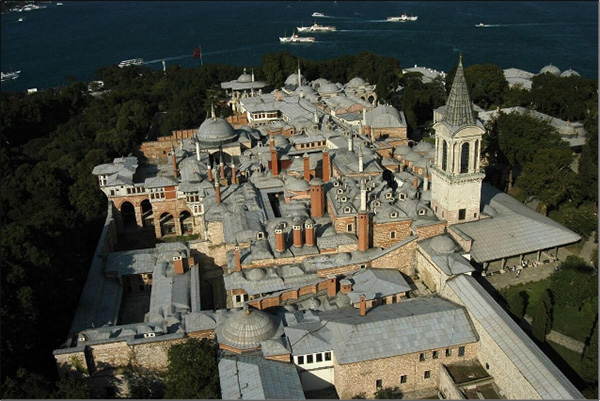 If you were asked what the most beautiful palace in the world was, what would you answer? Would it be the spacious Palace of Versailles, the stately Buckingham Palace, or even the beautiful Gyeongbokgung Palace? All sorts of palaces exist all over the world, and they each represent the culture and heritage of their countries. So let’s take a tour and find what makes each unique!
If you were asked what the most beautiful palace in the world was, what would you answer? Would it be the spacious Palace of Versailles, the stately Buckingham Palace, or even the beautiful Gyeongbokgung Palace? All sorts of palaces exist all over the world, and they each represent the culture and heritage of their countries. So let’s take a tour and find what makes each unique!
Gyeongbokgung Palace (경복궁)
The first palace of this list is the beautiful Gyeongbokgung Palace, located in the Republic of Korea’s capital city of Seoul. Originally built in 1395, Gyeongbokgung was the largest of the Five Grand Palaces built during the Joseon dynasty. It was destroyed in the early 20th century, but it is gradually being restored to its original form. Unlike the many palaces that serve as symbols of power, Gyeongbokgung Palace reflects the Confucian philosophy of the time, which taught that a palace shouldn’t be a symbol of sovereign power, but a place where the king himself could cultivate his mind and rule over his people with the help of government officials. Therefore, Gyeongbokgung Palace is simple and elegant, and maintains a perfect harmony between nature and architecture.


Palace of Versailles (Château de Versailles)
Probably one of the most recognizable palaces in the world, the Palace of Versailles is a magnificent example of French Baroque architecture. Characterized by its numerous columns and windows, abundant artistic designs, and intricate gardens, the Palace of Versailles sought to symbolize the wealth and power of the king. While the Palace of Versailles started only as a simple hunting lodge, it soon became the model of the ideal royal residence throughout Europe.

Topkapi Palace (Topkapı Sarayı)
Türkiye’s Topkapi Palace began construction in 1459, and has been repeatedly modified over the centuries. Compared to the symmetrical appearances of many other palaces, Topkapi Palace is asymmetrical with an irregular layout, and blends Islamic architecture with Seljuk Turkish architecture to form a unique style of architecture known as Ottoman architecture. Topkapi palace is characterized by its domes, half domes, buttresses and minarets, and its blending of political and religious designs.

Palace of Pena (Palácio Nacional Da Pena)
The Palace of Pena is a colorful castle built in the hills of Portugal in 1842. It is the pinnacle of the Romantic style, but it also has characteristics of Neo-Gothic, Neo-Moorish, and Neo-Manueline architecture. Romanticism puts focus on emotion and senses, and creativity is more important than following any strict sort of rules. This is best exemplified by the Palace of Pena’s bright colors and unique combination of styles. The Palace of Pena was classified as a World Heritage Site in 1995, and is considered one of the Seven Wonders of Portugal.

Written by: Mackenzie Migdal
Originally from New Mexico in the United States. Current fifth-year undergraduate at the University of Hawaii at Mānoa as a B.A. Candidate for Korean for Professionals and a B.A. Candidate for Political Science. Exchange student at Korea University, Intern at VANK (Voluntary Agency Network of Korea)